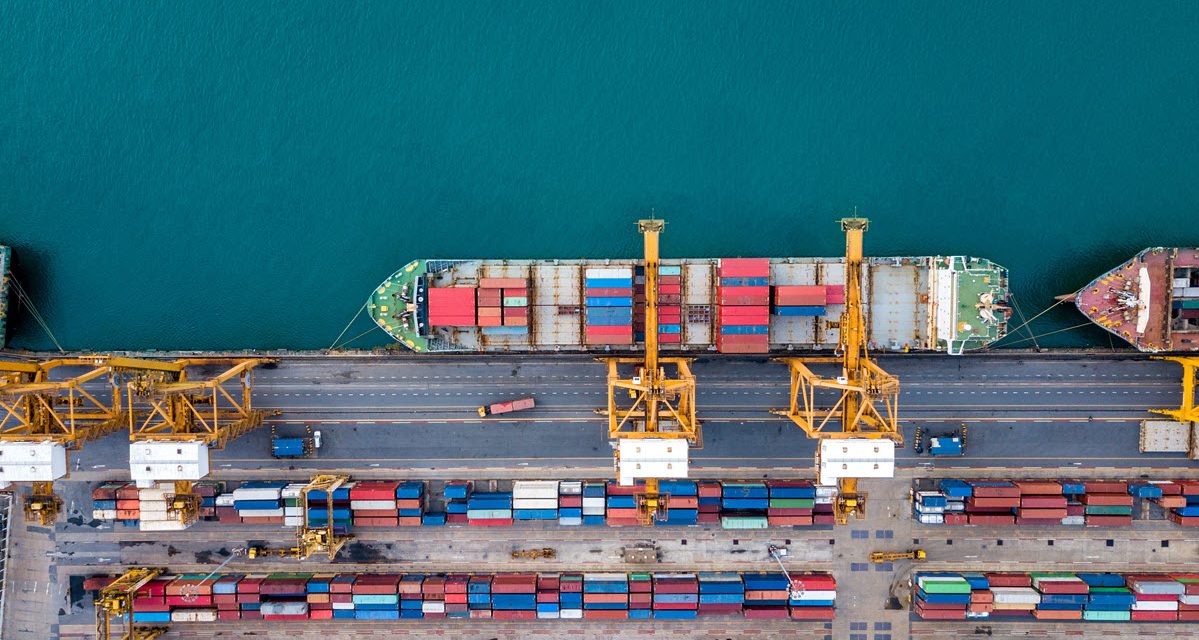By Amber Christian
COVID-19 is continuing to complicate global supply chains. This trend will continue through the holiday ordering season. Most of the world has opened up with the adoption of vaccines and is beginning to treat COVID-19 as endemic. However, this isn’t the strategy that is currently being pursued in China. China is continuing to shut down different regions of the country in pursuit of a zero COVID-19 strategy.
Manufacturing supply chains in China are complex, spanning multiple manufacturers across different regions. For example, a product is manufactured in one region, but the packaging material is made in a second region. And the product is assembled and shipped from a third region. To operate smoothly, all regions have to be open and operating at normal capacity. Additionally, logistics and transportation processes must all be operating smoothly too. Shutdowns are further complicating supply chain problems in the manufacturing process. We will continue to experience the ripple effects of these challenges.
Debbie Futhey of Memories of Home in Roseville, Kansas, said, “Little product is available. Or, some will not ship until your order is complete, even though you purchased it early. Or they will ship but you lose your freight cap. It is extremely frustrating for planning.”
According to CNN, “Data from Project44, which tracks global supply chains, showed that shipment delays between China and major US and European ports have quadrupled since late March, when China shut down the city of Shanghai, which has the world’s busiest container port.” (cnn.it/3lFuQOI)
Cheri Willett of Dogwood Vintiques in Jefferson City, Missouri, has been experiencing “extreme shipping delays — up to six-month delays, increased shipping charges, shipping container surcharge fees.”
Additionally, Russia’s invasion of Ukraine has added volatility to transportation costs. This is adding inflationary pressure to already increased freight costs. Maersk, the second largest container shipping company in the world, said, “The company’s average freight rate jumped 71% in the first quarter from a year earlier.” (cnn.it/3lFuQOI)
Shelly Rosborough of William and Mary Gift Shoppe in Indiana, Pennsylvania, said, “At 27% shipping with the extra container charges, it is getting difficult to make things affordable.” Continue to expect freight costs to increase as inflation pressures mount.
The Pivot
The continued meltdown of global supply chains provides an opportunity to reassess your sourcing strategies. This year it will continue to be important to have a creative sourcing plan. There are several strategies you can consider as you craft your holiday purchasing plan.
First, if you’ve never tried cash-and-carry markets, this might be your year to give them a try. Haven’t been to a cash-and-carry market before? Learn more about them on the Smart Retailer website at bit.ly/SR-CashCarry.
Second, with the continued escalation of freight costs, buying local handmade is a great strategy to offset some of these costs. By starting to plan now, it creates a great opportunity to plan ahead with your local makers. This creates a great holiday pipeline for them and greater inventory certainty for your store.
Third, try ordering smaller amounts from a variety of wholesalers. Randy Menzel from 1st Center Floral & Garden in Brodhead, Wisconsin, said, “We have been buying smaller orders from more wholesalers, despite higher prices. We learned a long time ago that if you don’t have product on the shelves, it will be hard to get your customer back again. Thankfully, we had inventory from past seasons to keep the shop full, and it has paid off. We took on risk ordering plant material late in the summer last year and it paid off, as some businesses went without. We have been trying to order at least one or two seasons ahead of when we normally would, taking items earlier, and storing them until needed.” Consider how painful the costs will be to try to rush order items this holiday season. The time is right to craft your holiday plan.
Next Steps
Create your plan for sourcing product this holiday season now. Plan to order smaller amounts from a variety of wholesalers to ensure product delivery.
Add local and handmade products to your inventory. Online websites like Stockabl.com can help connect you to local makers or target specific types of products.
Consider cash-and-carry or other alternative market sources for products this season.
Watch Amber’s vlog on this topic, smart-retailer.com/stockabl/
Amber Christian is a consultant, entrepreneur, and owner of Stockabl. She bought Stockabl to support her passion for makers, artisans, and independent retail business. She uses her technology background to create innovative new solutions to support buying local and small businesses. She welcomes you to connect with Stockabl on Instagram at @shopstockabl.










